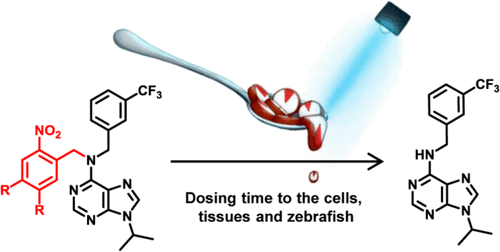


“Controlling the Circadian Clock with High Temporal Resolution through Photodosing”
Dusǎn Kolarski, Akiko Sugiyama, Ghislain Breton, Christin Rakers, Daisuke Ono, Albert Schulte, Florence Tama, Kenichiro Itami, Wiktor Szymanski,Tsuyoshi Hirota and Ben L. Feringa
J. Am. Chem. Soc. 2019, 141, 15784-15791. DOI: 10.1021/jacs.9b05445
Circadian clocks, biological timekeepers that are present in almost every cell of our body, are complex systems whose disruption is connected to various diseases. Controlling cellular clock function with high temporal resolution in an inducible manner would yield an innovative approach for the circadian rhythm regulation. In the present study, we present structure-guided incorporation of photoremovable protecting groups into a circadian clock modifier, longdaysin, which inhibits casein kinase I (CKI). Using photodeprotection by UV or visible light (400 nm) as the external stimulus, we have achieved quantitative and light-inducible control over the CKI activity accompanied by an accurate regulation of circadian period in cultured human cells and mouse tissues, as well as in living zebrafish. This research paves the way for the application of photodosing in achieving precise temporal control over the biological timing and opens the door for chronophotopharmacology to deeper understand the circadian clock system.